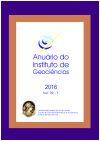High-Resolution Numerical Weather Simulation at the South Shetland Islands, Antarctic, Using WRF
DOI:
https://doi.org/10.11137/2016_3_105_110Keywords:
WRF, High-resolution, South Shetland Islands, Polar Ship.Abstract
This paper presents run high-resolution Weather Research and Forecasting (WRF) model in the region of South Shetland Islands, in Antarctica. Simulation model are compared to observations taken aboard a Polar Ship during the transect in this region. A total of 4 different simulations were performed, varying the number of points of the innermost domain 127 x 127 and 187 x 187 and two microphysics schemes. The results of air temperature and dew point are highly dependent on the size of the internal domain. When the small domain with points 127 are used, the model produces abrupt fluctuations of these variables and highly underestimates them in both settings. This can be attributed the sensitivity of the model to the transfer of information between the different nested grids. With larger innermost grid with points 187, such fluctuations no longer occur. The underestimation temperatures in the WRF model is associated with the deficiency representation on days with stratiform cloudiness. Days with middle-level clouds model the temperature tend to be better represented. The air pressure is adequately simulated with both domains, as it is more dependent on large-scale weather patterns, derived from the global model, which provides the boundary conditions. The small differences in air pressure among the simulations are a consequence of the dynamical adjustment of the model. The microphysics scheme WSM5 results were better than scheme WSM3 for all variables tested here.Downloads
Download data is not yet available.
Downloads
Published
2016-10-03
How to Cite
Comin, A. N., Acevedo, O. C. and Souza, R. B. de (2016) “High-Resolution Numerical Weather Simulation at the South Shetland Islands, Antarctic, Using WRF”, Anuário do Instituto de Geociências. Rio de Janeiro, BR, 39(3), pp. 105–110. doi: 10.11137/2016_3_105_110.
Issue
Section
não definida
License
This journal is licensed under a Creative Commons — Attribution 4.0 International — CC BY 4.0, which permits use, distribution and reproduction in any medium, provided the original work is properly cited.















